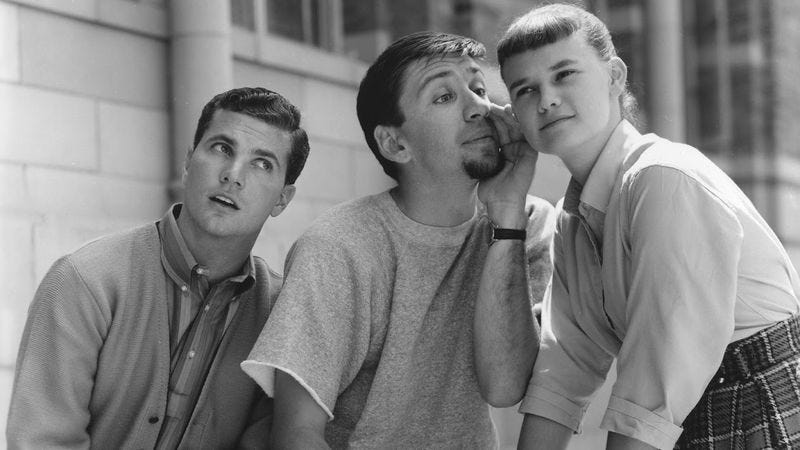 |
| Dobie, Maynard and Zelda. "Watch out for the current at K Bay. Too much work". |
"Work!" Bob Denver would chirp. A year after Dobie Gillis bit the dust, Denver took the three hour cruise on the S.S. Minnow that set up 28 seasons of work (there's that word again) as Gilligan. Well, I swim hard when I have to. Sometimes it makes the difference between making it back to shore or spending the night at sea treading water. But in general, I do my best to avoid strong currents. Its too much work.
 |
| Bad Camera. Too many buttons, not enough answers. |
So she headed off to the Keahou Shopping Center and I headed for the beach.
There were not too many swimmers at 10 AM and the water was just deep enough for me to slide out over the rocks. And there was another piece of good news...the water wasn't all that cold. My fear of a mask leak, unfortunately, was well founded and I was soon emptying my mask about once a minute. Sometimes I would concentrate on what I was doing and suffer a nose full of water.
 |
| Shortnose wrasse juvenile Kahalu'u February 2019 |
All that aside (strong current, leaking mask and uncooperative camera) I experienced some pretty clear water, which was downright warm in a few spots, and some pretty good fish. The best fish early on was a juvenile shortnose wrasse. The adult of this diminutive species, has an amazing array of colorful luminescent spots. As you see here, this juvenile, which was swimming with some baby parrots, bird and belted wrasse, was basically brown with a constellation of white spots. This juvenile fish is pretty rare elsewhere, but occurs regularly in the spring at Kahalu'u. Here I am including the best I could do given the focusing problem.
There was a nice variety of other fish, including a foraging whitemouth moray and a large zebra
 |
| Star eye parrot, Kahalu'u February 2019 |
Before I headed for the beach, I encountered a very colorful star eye parrotfish. This is a very common species at Kahalu'u and the lighter hued males, like this one, can be very colorful, indeed. Lucky for us, he allowed me to swim within the four to seven foot range.
On my way out, I saw a small juvenile raccoon butterfly. While raccoon butterflies are common where ever we swim, the juvenile raccoon is rare as hen's teeth. You will recall that I showed you a picture of what might have been my first taken at Mahukona six or so months ago. Yesterday's fish was smaller and even more distinctive. He was in the channel where the water was only six inches deep and swishing in and out, turbulent and cloudy. But the little fish was only a foot or so in front of me for as much as 20 seconds, so despite these difficult conditions, I got an excellent look. He was very square in shape, about two inches on a side and had a distinctive black occulus in the upper aft quadrant. I am including a picture from the internet to give you a better idea what this particular fish looked like. John Hoover states that
 |
| Extreme Juvenile Raccoon Butterflyfish , Volox Underwater Photography |
This was a great fish upon which to conclude this difficult swim. Sandra met me in the shelter and got the grump home where she soothed my wet feathers with some warm soup. Its spring at K Bay and I'm sure our next swim there will be more pleasant. Perhaps we will see you there.
jeff
No comments:
Post a Comment